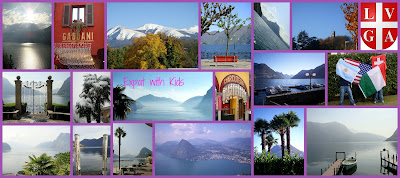Driving around town you might have noticed the Nippon advertising. Until February 27th, 2011, four exhibitions and numerous events will represent the stages of a journey - involving the most prestigious venues of Lugano - through the culture of Japan: from the ancient traditions to contemporary artistic expressions.
This initiative documents centuries of social and artistic culture, embracing tradition as well as present day expressions, putting in the spotlight the elements which recur in the extraordinary Japanese civilization. In is chronological development, this project unites the whole city and its several exhibition venues “under the Rising Sun”.
Araki - Love and Death
Nobuyoshi Araki's photography expresses and updates many of the themes most closely connected to Japanese culture. The Lugano exhibition bears witness to the artist's work in its many varied expressions. Museo d’Arte, Villa Malpensata, Riva Caccia 5, Lugano
GUTAI - Painting with Time and Space
If Nobuyoshi Araki’s work invites the viewer to observe the world through the eyes of a Japanese artist and to seize its sensual charge, the work of the Gutai Group allows to grasp the meaning of concepts as matter and creation and the relationship between artist and nature in the island of the Raising Sun. Museo Cantonale d’Arte, Via Canova 10, Lugano
GUTAI - Painting with Time and Space
The creativity of Gutai aims to express the aesthetic autonomy of materials. Following this principle the goal of the group is not the production of works destined to be displayed in museums. On the contrary, the art of Gutai often implies a relationship with nature. The exhibition hosted at Museo Cantonale d’Arte has therefore an obvious extension in Parco Ciani. In the park will be recreated some of the most remarkable open air installations devised in the mid-1950s by the artists belonging to the group. The Park at Villa Ciani, Parco Civico, Lugano
Ineffable Perfection. Japan’s Photography. 1860-1910
Villa Ciani plays host to Ineffable Perfection. Japan’s Photography Between 1860 and 1910. This is the largest temporary exhibition of its kind ever to be realised, worldwide. The themed path, the fruit of research carried out by the Museo delle Culture’s team beginning in 2007, takes its audience on a journey of discovery into Japan's traditional image. Villa Ciani, Parco Ciani, Lugano
Shunga. Art and Eros in Japan During the Edo Period
The natural conclusion to the exhibition path is represented by the display dedicated to the shunga at the Museo delle Culture. The shunga, the Japanese word meaning literally 'images of Spring', is a genre of erotic prints whose output peaked during the period of the Tokugawa shogunate, between 1603 and 1867.
Briefly summarised, the shunga were an exceptionally vibrant expression of ethical and aesthetic reflections on the brevity and transitory nature of life, sentiments which expressed the values of the middle-classes of the large cities of the time. The selection presents works from the most important creators in the evolution of the shunga genre from Koryusai to Kunimori, and includes a large selection from the most renowned artists, including Kiyonaga, Utamaro, Hokusai and Hiroshige. Museo delle Culture, Heleneum, Via Cortivo 26, Castagnola
For detailed information, please go direclty to the NipponLugano site which is beautifully set up. Hurry up, there are only 2 weeks left to visit this very original exhibition.
O tanoshimi ni
お楽しみに
Enjoy!


No comments:
Post a Comment